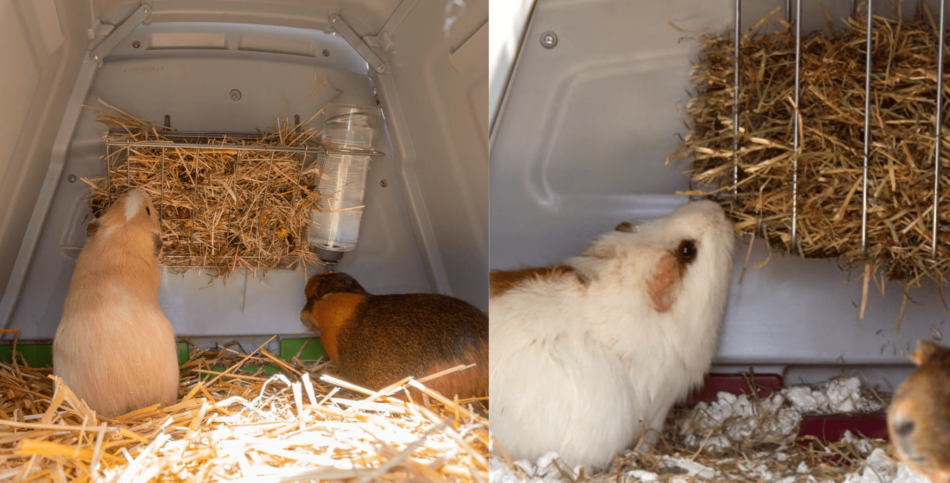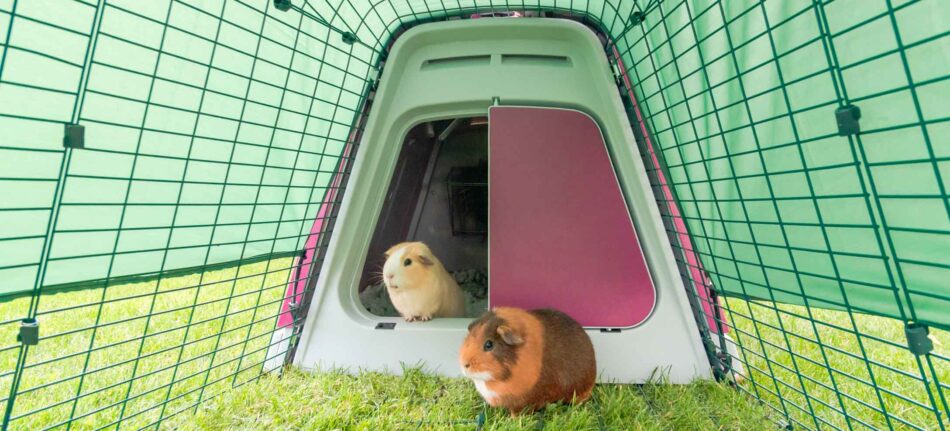How Guinea Pigs Prepare for Winter
With just a few weeks until we fall into the most magical season of all, now marks the perfect opportunity to get your guinea pigs winter-ready. Finding the ultimate cosy coat is one way we can prepare for the season ahead, but for our furry friends, the preparation is, of course, slightly different. And whilst your cavy already has a soft, fluffy coat of their own, this doesn’t mean they can brave the colder temperatures without our help.
Fortunately, getting your pet winter-ready doesn’t have to mean a complete transformation of their autumnal hideaway to a brand new winter wonderland. Instead, with these simple steps, your guineas will be popcorning with joy into the new season and ready to brace the change.
Do guinea pigs like winter?
If you could translate your guinea pigs’ purrs, whistles, and coos, they’d tell you that their favourite temperature is somewhere around 15-24 degrees Celsius. And whilst in their natural habitat of the South American Andes, guinea pigs would cuddle up to each other to stay warm, nowadays, they have become accustomed to their new environments. Therefore, as an owner, it’s important that you, too, take the right steps to make sure your cavy isn’t cold.
Can guinea pigs live outside in winter?
Omlet’s Eglu Go Guinea Pig Hutch has been designed as an all year home, depending slightly on where you live and how cold it gets. However, for hutches unlike the Eglu which has twin wall insulation, it’s advisable to move your piggies into a shed or garage in the upcoming months. However, before you do so, you should know that these pets aren’t amazing at adapting too well to recurring and drastic changes in temperature. Therefore, being brought in, then out, then in…and out (!) is harmful. You should either bring them in for the entire winter or for a few weeks when it is very cold. Take a read of our Where To Put My Guinea Pig Hutch guide, so that you pick the perfect spot for your cavies’ winter retreat.
Preparing for winter
Your guinea pigs are ready to grow their thicker winter coat and you’ve nearly turned the heating on…so what now?
Invest in warm bedding
If you haven’t already, it’s about time to put on that cosy bedding that’s been stored away since March…(that applies to your guinea pigs too!). Warm bedding is a winter must-have for us and our guinea pigs, so be sure to stock up on loads of extra to line their home. It’s especially important that this stays clean and dry.
Another brilliant option is the Snugglesafe Microwave Heatpad, which can be used in your pet’s Eglu Go Guinea Pig Hutch. All you have to do is microwave the pad for a few minutes and it will provide up to 10 hours of warmth!
Get a bottle cover
As the weather gets colder, keep an eye on your guinea pigs’ water bottles. Freezing temperatures can lead to the metal spout and the actual water becoming frozen, inevitably meaning your cavies won’t have access to one of their basic needs. Not only will a water bottle cover mean their water bottle won’t freeze in winter, but also doubles up in summer to keep their drink nice and cool!
Avoid the grass
Your guinea pigs may have had a summer of fun exploring all the luscious green grass of the garden, but winter is unfortunately not the time for outdoor exploring. Putting your guinea pig down on grass when it’s especially cold or damp isn’t wise. For one, it’s uncomfortable for your guinea pig. It can also, however, lead to illness. Since these furballs have sensitive skin, getting it wet on a regular basis can be detrimental, in combination with being cold and not being able to dry off quickly. This doesn’t mean winter can’t be entertaining for your guinea pigs though! Check out our range of guinea pig toys for some indoor play inspo.
Keep on top of their diet
Guinea pigs should be fed a balanced diet all year round, including the essential nutrient vitamin C. We even wrote all about why vitamin C should be a staple in your guinea’s diet! Vitamin C aside, stocking up on plenty of calories is super important during the colder months as cavies burn more calories in order to stay warm. You should continue to feed them both fresh and dry food every day, as well as an unlimited supply of hay, but a few extra calories this season won’t hurt anyone!
Use hutch covers
Covering your cavies’ hutch is another way to keep them warm during winter, so it’s a good idea to invest in an extreme temperature jacket. This can be wrapped over the hutch and provides further protection to your Eglu Go. If you don’t have an Eglu, you can hang a roll of carpet over the hutch, or use a blanket, which you can nail down to keep in place. Please note however, that guinea pigs must have ventilation in their hutch at all times.
How to tell if a guinea pig is too cold
Before the big chill sets in, taking these measures to keep your cavies cosy will mean an enjoyable winter all round. But, it’s still good to know how to tell if your guinea pig is feeling a little frosty.
Whilst we don’t speak the same language as our pets, they’re fantastic at communicating their emotions, likes, and dislikes. Guinea pigs are no different and will use body language to tell you they could do with some warming up! Just like us, guinea pigs will shiver when they’re cold, as well as curling into a ball, known as huddling. Alternatively, your piggies might craft a makeshift blanket with their bedding in an attempt to warm their body temperature. You should also feel their ears, and if they’re cold, then you guessed it, the rest of their body is cold too.
Now that you’re ready for winter with your guinea pigs, you can sit back, enjoy a cup of tea under a fluffy blanket, assured that your furry friends will be happy, safe and warm this season.
This entry was posted in Guinea Pigs

